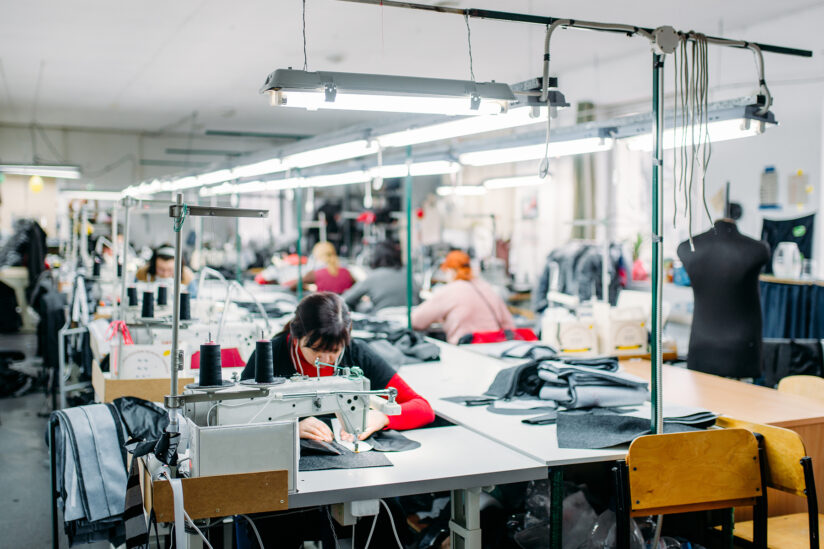Nowadays, everybody is talking about sustainability. However, to make sure that a brand is really aligned with eco-conscious values, it’s important to have more than just organic fiber and a biodegradable package. At this moment, we need to emphasize the importance of a transparent and traceable fashion supply chain.
As Yao Huang, Managing Partner at The Hatchery says, sustainability now gives money. After all, consumers demand brands to have social and environmental values at their core. She also affirms that “COVID really fueled the consumer change and it’s not going back”. In other words, for those who only look into the cash side, eco-friendly values sell.
According to a McKinsey Report, 57% of the respondents have made significant changes to their lifestyles to lessen their environmental impact. Also, over 60% report going out of their way to recycle and purchase products in environmentally friendly packaging.
No wonder sustainability has shifted from being a trend to being a must.
But, how can a brand become sustainable? What are the main steps for it? How to have a traceable supply chain?
We’ve interviewed Aadi Vaidya, COO at Zilingo, and Jessica Kelly, Founder & CEO of THR3EFOLD. They helped us better understand the whole reality.
Building & Shifting a Brand Towards Sustainability
Our economic system was not built to be sustainable. Actually, it’s quite the contrary.
As stated by The Guardian, capitalism has “contributed to the breaching of several ecological boundaries, in relation to climate change, biodiversity loss and nutrient enrichment”. Furthermore, while demanding and consuming the natural sources that sustain it, “capitalism is also leading to increasing inequality, in turn creating social tensions that make it still more exposed”.

Truth is, building a sustainable brand from scratch is easier than making an already existing one greener. Yet, it’s not impossible!
We’ve shared 5 tips on how to add sustainable values to a fashion brand on our blog. And, today, we’ll be talking about the importance of also focusing on a traceable supply chain.
What’s a Fashion Supply Chain
The fashion supply chain has specific characteristics; especially because it belongs to one of the world’s biggest and most polluting industries. So, in order to change the current reality, we must watch carefully from the whole production process – from the product conception, raw material collection, to the final product.
The fashion supply chain is related to the process of tracing each step apparel and accessories process. That means, from material sourcing to the factories. And also the distribution network, in other words, how the products get to the consumers.
As stated by Good On You, “the global clothing supply chain involves millions of people as well as tonnes of water, chemicals, crops, and oil”. It revolves around a whole process that normally passes on different places – it’s rare when the raw material and the finalized product come from the same place.

After the rise of Fast Fashion, the demand for high speed, high volume and cheap consumption increased. And, as you may know, it brought huge environmental and social impact. They are producing more clothing than ever, putting garment workers into slavery conditions and more. Everything with the main goal of profiting.
But that should not be accepted anymore.
As awareness increases, consumers are demanding traceability and transparency from companies. And, in order to be honest with your consumer, you must keep your fashion supply chain as one of your priorities.
Check out some Traceability Tips that will Change Your Business!
Sustainable Products vs. Sustainable Fashion Supply Chain
Andrew Kassoy is the founder of B-LAB, a non-profit organization that certifies sustainable businesses. In a Forbes article, he says, “It’s great when big companies reduce their environmental impact and profit from it (Wal Mart) and it’s great when a company sells some eco-friendly products (Nike), but none of those things make the difference. sustainable company in terms of creating a positive impact on society and/or the environment.
For these companies to be sustainable, we have to know that, as companies, they are having a positive and measurable impact on all actors, including workers, the community and the environment. If all they do is sell green products, that tells us nothing about their wider impact; worse, if only 10% of their products are eco-friendly, they are probably doing a lot more damage than the 90% that are not.”
In fact, that’s the feeling you get in fashion. Small, brave steps are being taken, while an unsustainable production system really sustains the market.
Transparency & Traceability: Taking Control of the Supply Chain
When talking about transparency and traceability, we’re doing justice to the honesty of your process with the outside world. But for this to be possible, it is essential to have full control over your fashion supply chain.
As stated by Aadi Vaidya, COO at Zilingo, “complete control of the supply chain can be interpreted as knowing what to produce and ensuring merchandise reaches demand centers when asked”. He affirmed that brands can achieve it if they have a good understanding of:
- Consumer insights: Trend analysis is based on what luxury brands are dictating and what customers are buying in real-time – whether online or offline.
- Production strategy: This could include strategies like automating the factory shop floor with the real-time flow of sales information to production centers, buying fabric in bulk, etc. Basically, answer the question: “How to produce what customers want fast?”
- The right balance of production centers as well as nearshoring to ensure logistics bottlenecks don’t lead to unwanted delays
Transparency + Traceability = Sustainability
Transparency cannot be restricted to company boundaries. Usually, most of the environmental impact is outside the company’s domains, for example, in the raw material production processes. There is little point in being sustainable and transparent in your processes if the environmental impact of raw material production is immense.
As seen on Fashion Revolution, this is what Ramon Arratia, director of sustainability at Interface Floor, argues: “To make real progress towards a more sustainable future, businesses need to be transparent about their environmental impact. This means reporting the corporation’s impacts. Such as greenhouse gas emissions, waste and water use, and the environmental impacts of its products through their life cycle. This will encourage healthy competition within the industry to produce better, more genuinely sustainable products rather than competing on smart claims or the best-designed brands.”
Sustainability has a relevant and growing appeal to consumption. Consumers are looking for brands that match their personal values. And, since environmental consciousness has increased in the past years, consumers look for sustainability in a new product. However, we must keep in mind that transparency is what will make the difference between a mere marketing ploy – also known as greenwashing – or an effective search for solutions.
Brand Transparency & Fashion Supply Chain Control
There is a growing awareness among customers about sustainable production practices, child/forced labor, the degrading environmental impact of production practices and much more.
Therefore, “today, transparency in brands is a must-have and not just good-to-have”, says Aadi. Hence, brands need to build transparency about their production practices, raw materials used, labour practices deployed by factories.
He also complements that transparency is wholly linked to supply chain control. “Suppose a brand ends up relying on some faceless agent somewhere in the world without knowing how the goods labeled as their brands are being produced. In that case, there is a higher likelihood that malpractices were used in the production process. Knowing their factory and having a real-time view of the production floor is critical if a brand wants to ensure transparency to its customers”.
But, how to make sure there’s transparency in a fashion supply chain? We have a solution for that…
Technology’s Role in Fashion Supply Chain
Technology has been playing an important role in the fashion industry and no one can deny it. When it comes to supply chain digitization, we are talking about turning the processes into digital. That means establishing data that aggregates information from across your entire supply chain. And by optimizing the fashion supply chain, the process can minimize supplier risk and enable transparency.
Therefore, to increase visibility into their supply chains, “highly transparent companies invest in resources such as dedicated oversight committees, on-site supplier inspections and third-party consultants,” according to Supply Chain Brain.
As Aadi also says, “technology is perhaps the only scalable way companies can ensure supply chain control and transparency. It is nearly impossible to place humans in each production center (fashion items often being produced in parts and then assembled at one location) and rely on manually fed data”.
Companies Who Set An Example
Summing it up, there’s no way to be sustainable without having full control of their production process. That’s why platforms such as THR3FOLD and Zilingo have been showing that innovation is sustainability’s best friend.
THR3FOLD’s technology helps sourcing executives to discover top ethical cut and sew factories and pick the best one easier and faster. Summing it up, they help brands and factories to work closer and more aligned. THR3FOLD recently became one of the 12 companies joining this edition’s Startupbootcamp. With the goal of building a more sustainable and transparent fashion industry, the company also has a coaching club. It focuses on helping emerging brands to “grow successfully”.
Jessica Kelly, Founder & CEO of THR3EFOLD, states that “we help brands to navigate sourcing and sustainability more easily”. In other words, if a rising or established apparel company wants to set up a safe and sustainable supply chain, the company’s platform connects them to ethical garment factories and sustainable textile mills across the world.
On the other hand, Zilingo is a B2B technology platform. It powers brands, wholesalers, distributors, retailers, and factories with innovative products and trade services. Over the years, it has evolved into an end-to-end enabler. Hence, giving raw material suppliers, fabric mills, manufacturers, wholesalers, distributors, brands and retailers access to commerce, software and services that optimize processes at scale, create cost efficiencies and support sustainable growth.






